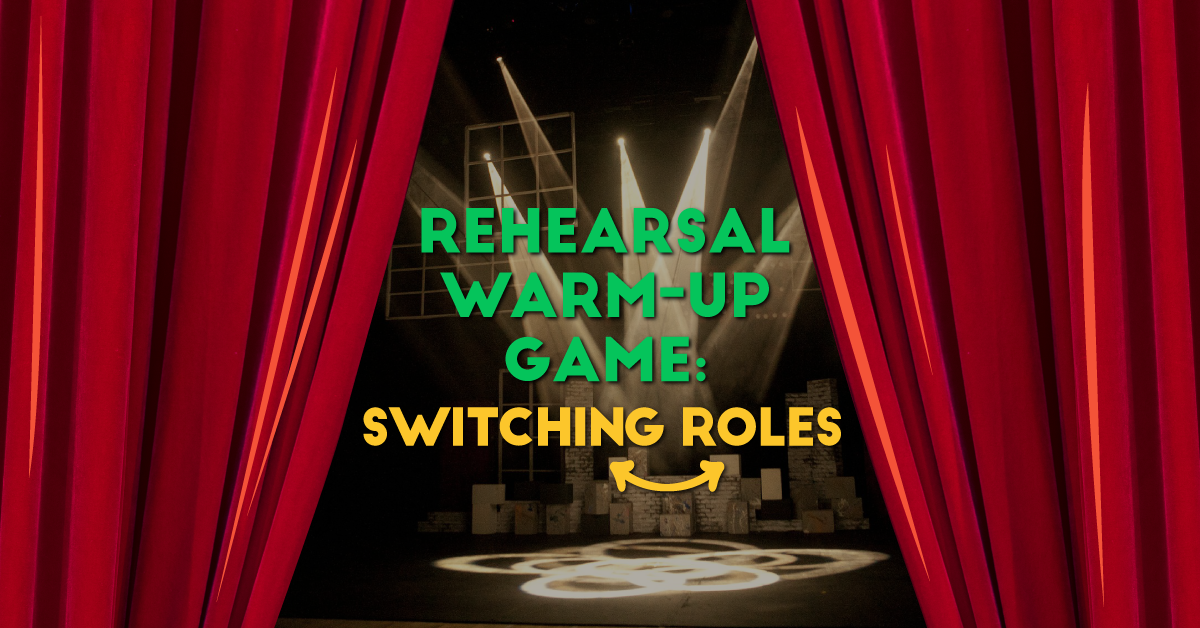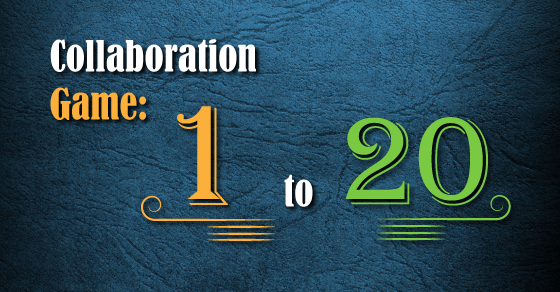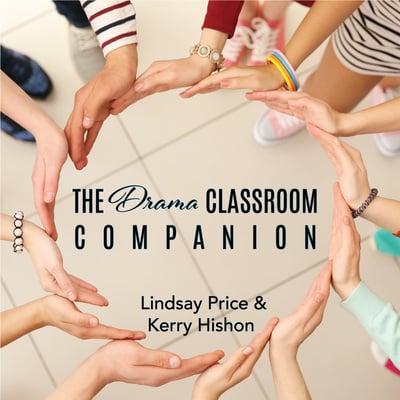Rehearsal Warm-Up Game: Switching Roles
Here’s a warm-up game you can try at your next rehearsal: Switching Roles. Students will use an improv game to take on a different part in the play you’re currently working on.
It’s a simple enough premise: using the framework of an improvisation game, such as Scenes from a Bag or What’s for Breakfast?, students will improv in character, but as a character they don’t normally play.
For example, if you’re currently working on Hamlet, the student who plays Claudius will do their improv in character as Ophelia, one of the Players, the Ghost, Osric, or whichever other character is chosen for them.
In terms of determining how the role switches will occur, you have a number of options available:
- Assign each student a different role
- Let students choose what role they wish to try out
- Make it random by drawing a role out of a hat
- Partner students up and have them switch roles (either student-selected or teacher-selected partners)
Trading roles with an assigned partner is probably the easiest method, as it ensures no roles get overlooked. If possible, try to have students with leading or named roles switch with students in ensemble or chorus roles for a more equal-opportunity experience.
Switching roles in a warm-up exercise gives students the chance to explore how they might approach a role in a different manner to the student actually cast in that role. Are they able to switch from the mindset and physicality of their current character to those of a different character? How would they differentiate their performance from the student currently playing the role? On the other hand, what needs to be kept the same? In other words, how can students ensure that it’s clear they’re playing the same role, but keep it interesting and fresh?
The exercise also gives students the opportunity to get to know other characters in the show on a deeper level. Many students get so wrapped up in their own character that they don’t think about other characters, unless the other character directly interacts with theirs. They don’t think about how other characters move, think, feel, or interact with other characters – or how their fellow castmates got to that point. This exercise helps students develop a better understanding of and a deeper connection with more than just their own character, which then leads to a better understanding and deeper connection with the show as a whole.
Having your students try switching roles is also beneficial for you as a director. It may inspire interesting new acting approaches and theatrical moments that could be adapted or included in the show. It may also give you some insight into future casting options for upcoming shows. Who knew that Ben was great at playing a villain, or that Casey could do that incredibly funny laugh?
There are a few challenges with this exercise, however. First, role switches need to be respectful. Students need to ensure they aren’t trying to parody or make fun of the current student’s performance in that role. Second, role switches need to be non-competitive. Students should not attempt to compete with the current casting and try and prove that they should have gotten the role over the current student playing the role. Third, role switches need to be kept in the warm-up and then left behind – meaning, the student currently playing the role should not try to alter their own performance to imitate what another student has done. They were cast into that role for a reason, and need to make sure that another student’s approach doesn’t affect them negatively.
This is why it’s important to do improvisations for this activity, rather than actual scenes from the show. This minimizes the chances that students’ feelings will get hurt, as well as reduces comparison and gossip opportunities (“Casey performed that character way better than Ben does; I can’t believe they didn’t get the role in the first place”).
Additionally, be sure that this exercise does not affect YOUR perspective of the roles. Avoid directly comparing students’ performances. For example, at your next blocking or notes session, don’t tell Ben to laugh just like Casey did while playing this game. As stated above, Ben and Casey were cast into their roles for a reason. Don’t second-guess your original casting choices.
Keep it lighthearted and brief. Remember, this is meant to be a warm-up game – make it fun, and then move forward in your rehearsal!
Related Articles
The Drama Classroom Companion
by Lindsay Price & Kerry Hishon
The Drama Classroom Companion is filled with articles and exercises to build the skills needed for theatrical performance as well as real world skills like creative thinking, critical thinking, collaboration, and communication.
The Rehearsal Companion
by Kerry Hishon
You’ve chosen the play, paid the royalties, done the script analysis, held your auditions, and cast the show. Tomorrow is the first rehearsal. Are you ready? Really ready? The Rehearsal Companion can help!





